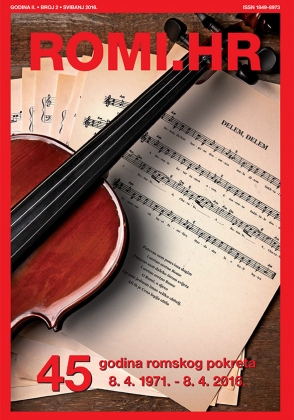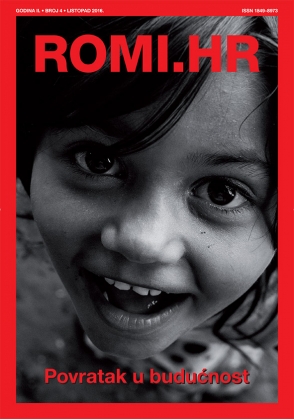Features ROMI.HR
/Although the Roma people often appear in films, they are rarely placed at the center of the narrative. One notable exception is the work of Emir Kusturica, a Yugoslav and Serbian director who brought Roma culture into the spotlight through award-winning films. Blending realism with magic, music, and tradition, Kusturica’s unique cinematic style introduced many viewers to the richness and complexity of Roma life.
The Roma people are frequently represented in films but in most cases only as background characters but very few creators have built the entire plot of the picture around Roma. In this sense, Emir Kusturica, Yugoslavian and Serbian director, can perhaps be called the main populariser of Roma culture in cinematography, it can be said that he introduced the European public to the Roma culture, because his films received the most prestigious film awards. In his films, Kusturica combines realistic pictures of everyday life, sometimes quite cruel or dramatic, with magical elements, widely celebrated holidays, many songs and national music. The life of the Roma is also captured in all its manifestations, both good and bad.
The first film to be mentioned is “The time of the Gypsies” (1988), which tells coming-of-age story of a young Roma man named Perhan with telekinetic powers who was lured into a life of crime and exploitation after being promised a better future in Italy.
An important detail of the film is that it was shot entirely in the Romani language, which was done for the first time in cinema. Despite the fact that the film clearly sets its action in Yugoslavia, the characters do not use Serbian, Croatian and other languages of this region among themselves, which emphasises their national identity and certain isolation from society and immerses the audience in the world and culture of the Roma.
The film features the important holiday for Roma – Day of St. George (Đurđevdan). Firstly, a scene of a home feast is shown, and then a scene of a mass celebration on the riverbank. A significant part of the film is the traditional Roma song " Đurđevdan/Ederlezi" for this holiday, arranged by Goran Bregović. It was this version of the song that became popular worldwide and appeared in foreign films (for example, "The Turkish Gambit", "Borat"). The scene of St. George's Day celebration on the river itself has acquired cult status and has become the subject of references in a number of films and TV series.
Holidays and folk rituals in general play a big role in the plot: during the film we see several weddings, a funeral and scenes of traditional magical healing performed by Perhan's grandmother.
Music becomes not only an important tool of the story, but also an element of the characters' worldview - no matter what difficulties happen in life, they are much easier to overcome with an accordion in your hands, this is what the main character is taught by his grandmother. This romantic worldview is complemented by the world of vivid dreams. The protagonist, being at the point of his moral decline, realises that with the loss of his dream he has lost himself, because, according to him, a Roma without a dream is a roofless church and a mute bell.
The second important film in Emir Kusturica's career in terms of Roma representation is the comedy "Black Cat, White Cat" (1998). The film is a mix of many characters of different ages and nationalities, storylines, traditions and languages. The film not only romanticises Roma life, presenting it as an endless holiday, but also, despite being a comedy, touches on important social issues for Roma, such as, for example, arranged marriages or connections with the criminal world. Nevertheless, within the framework of this film, the world of the Roma people is a kind of magical world where music heals, people live in harmony with animals, and love defeats evil. This work is filled with humor and a lighthearted attitude towards life, but it laughs not at the Roma, but rather with them.
However it is impossible to ignore the fact that Kusturica's films nevertheless caused controversy in the Roma community. Some pointed out that the films were filled with stereotypes about Roma (theft, selling children, living in poverty), others considered Kusturica's black humor inappropriate for this topic, and finally, the excessive generalisation of the culture and traditions of Roma society raised questions as well.
To sum up, using an absurd combination of pictures of harsh everyday life and magic and endless holidays with traditional music, Emir Kusturica created in his films a “lens” for international audience to explore Roma culture, although not everyone appreciates these films positively. Both films, “Time of the Gypsies” and “White Cat, Black Cat”, use narratives of varying levels of seriousness to highlight both the difficulties and joys of Roma life.
 Back to Features
Back to Features













